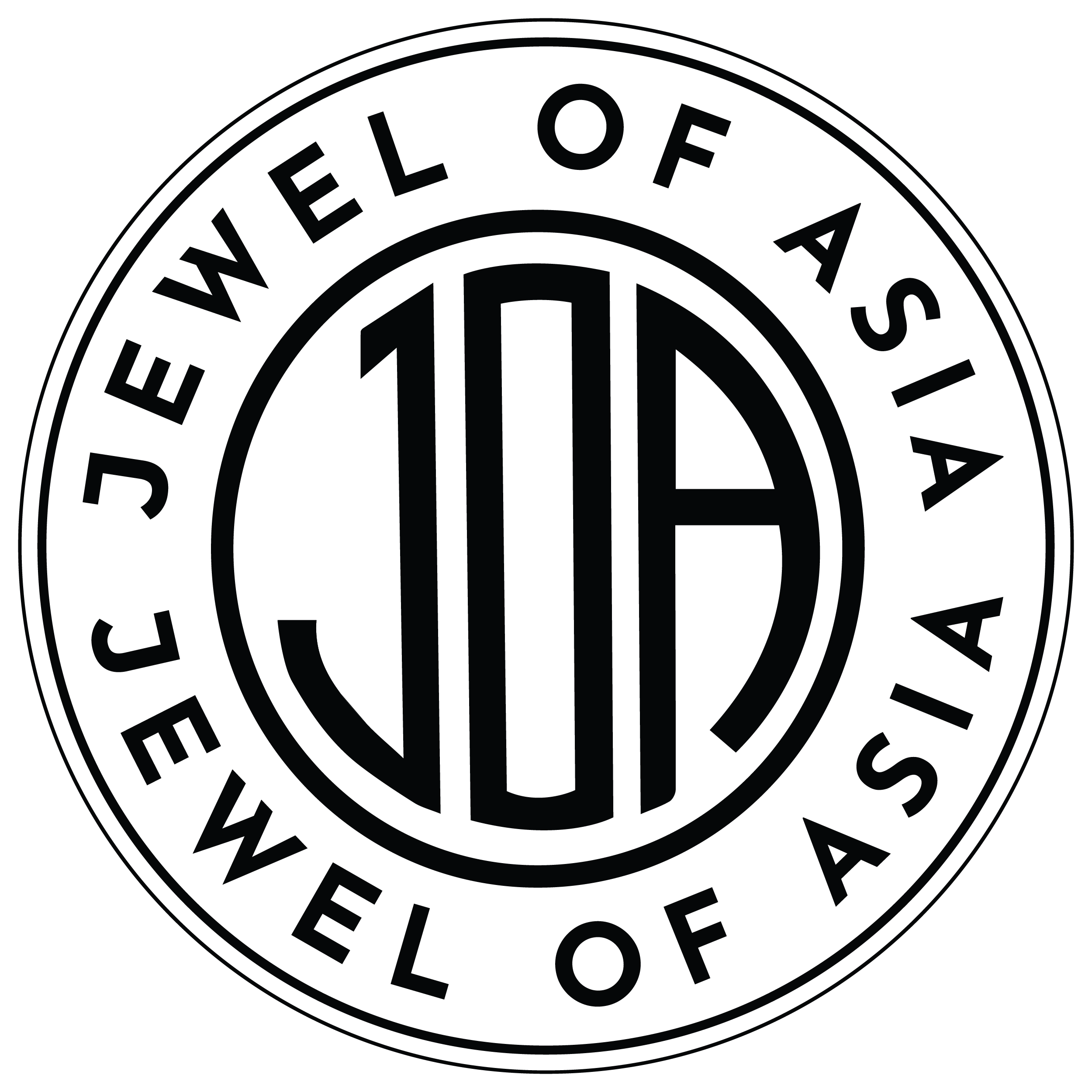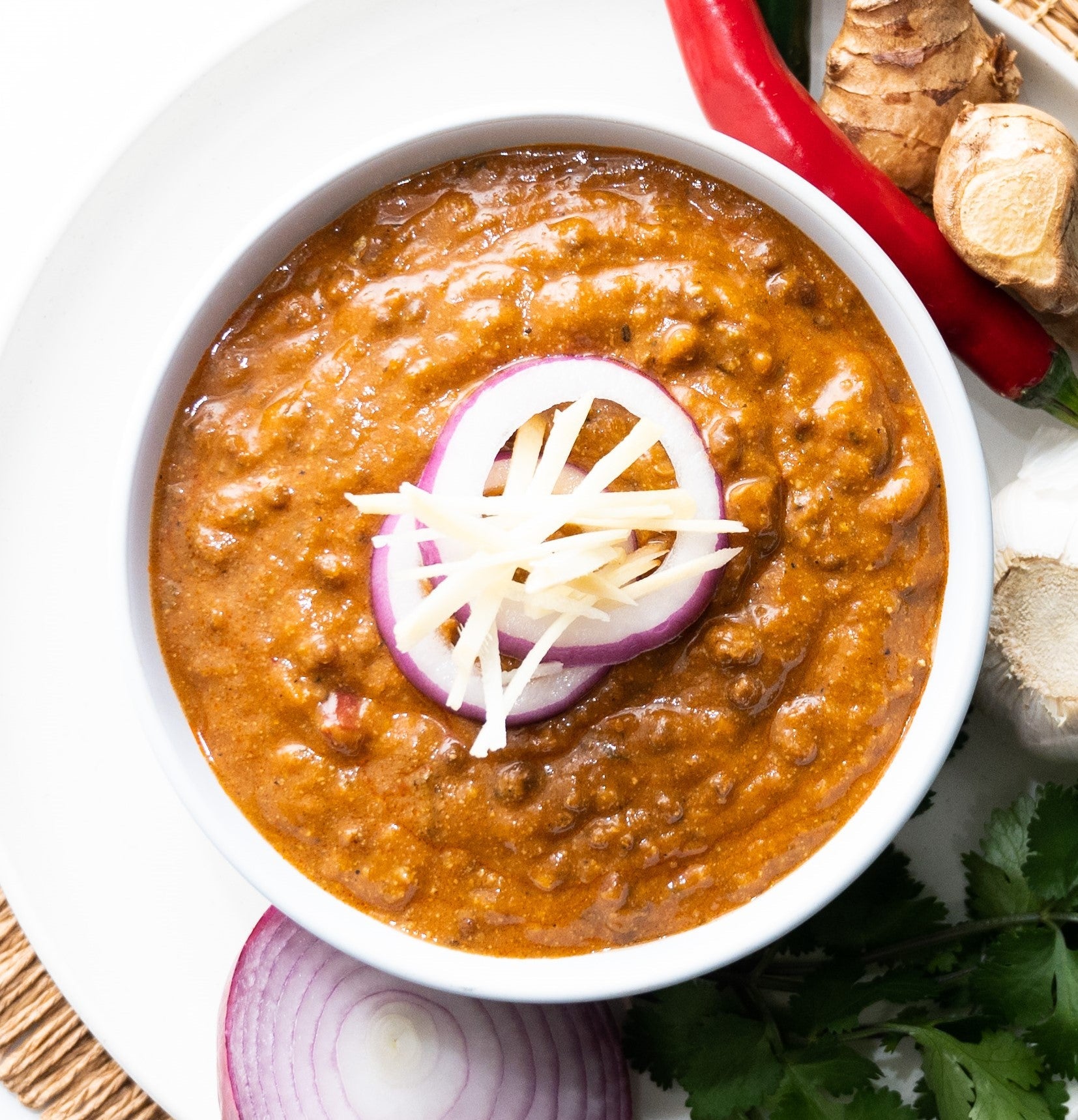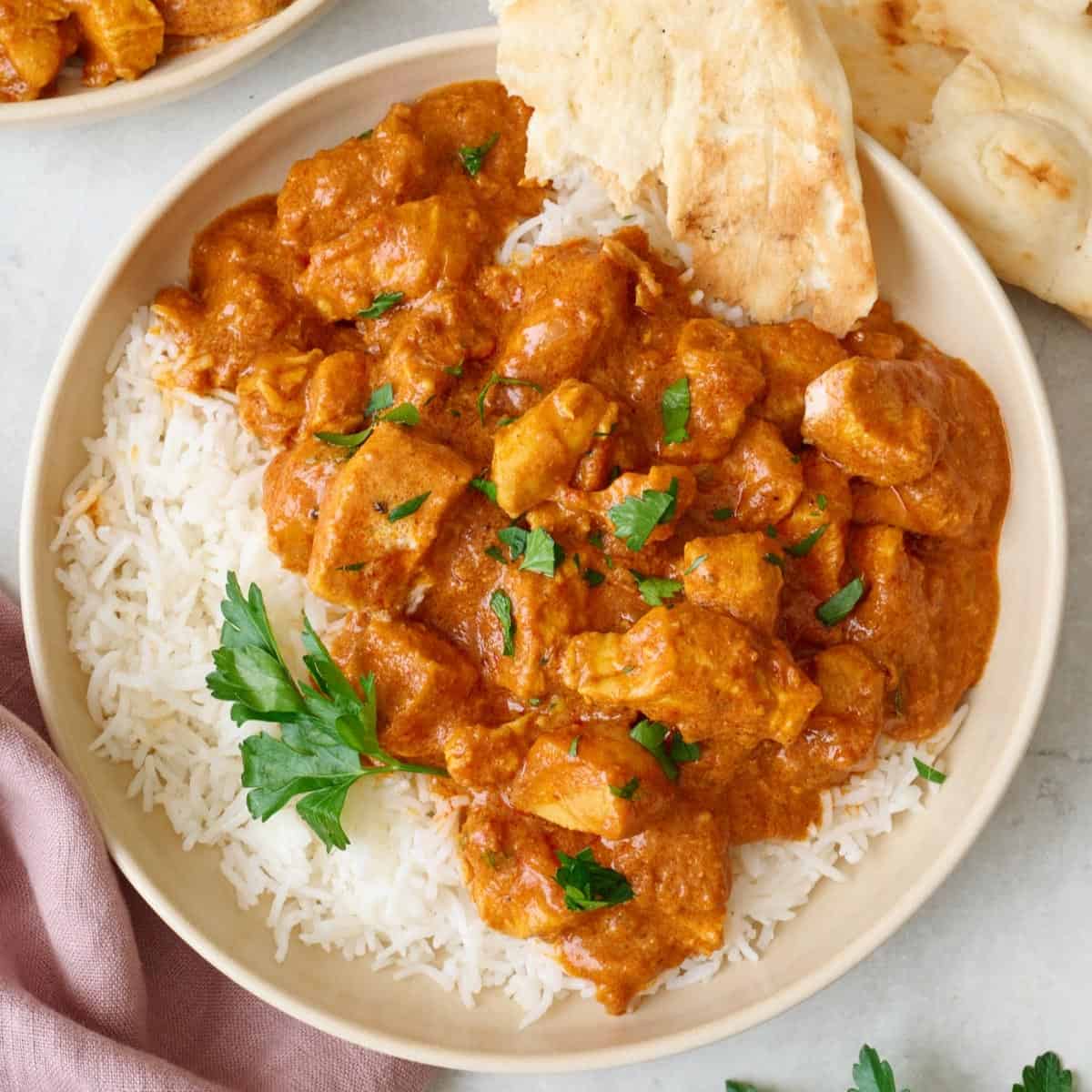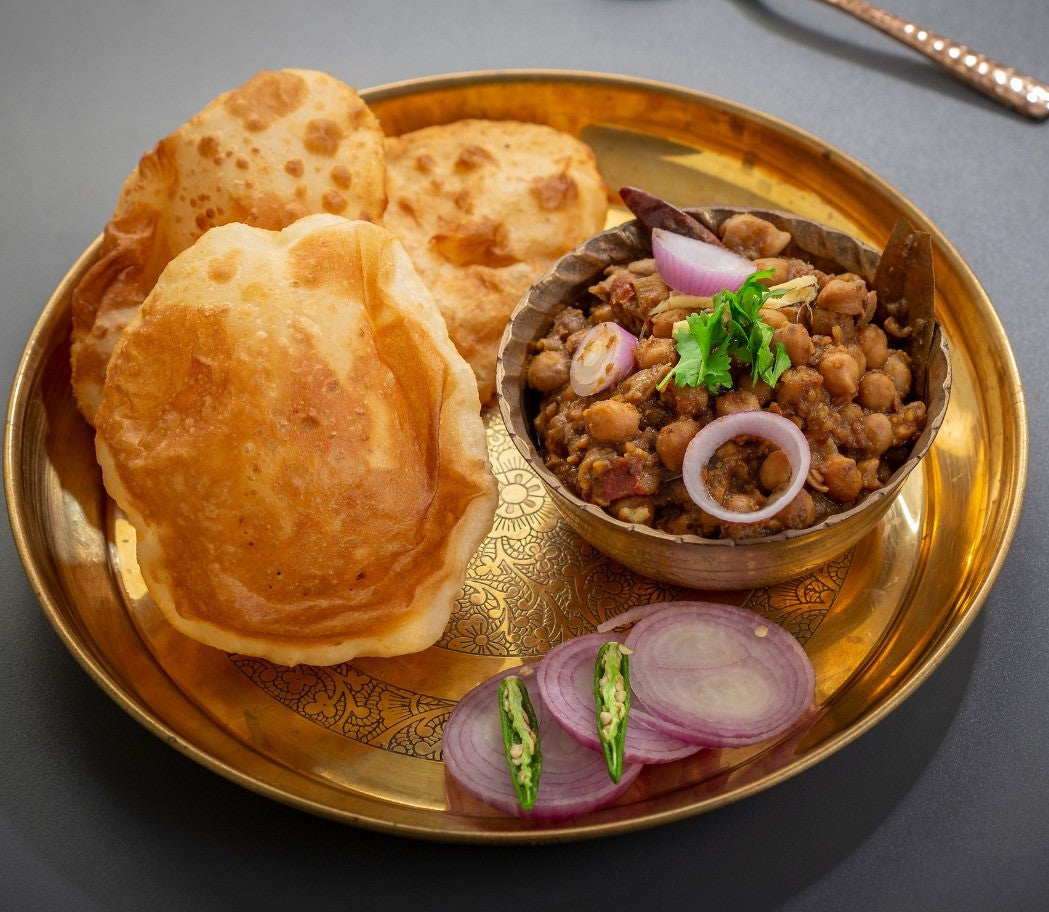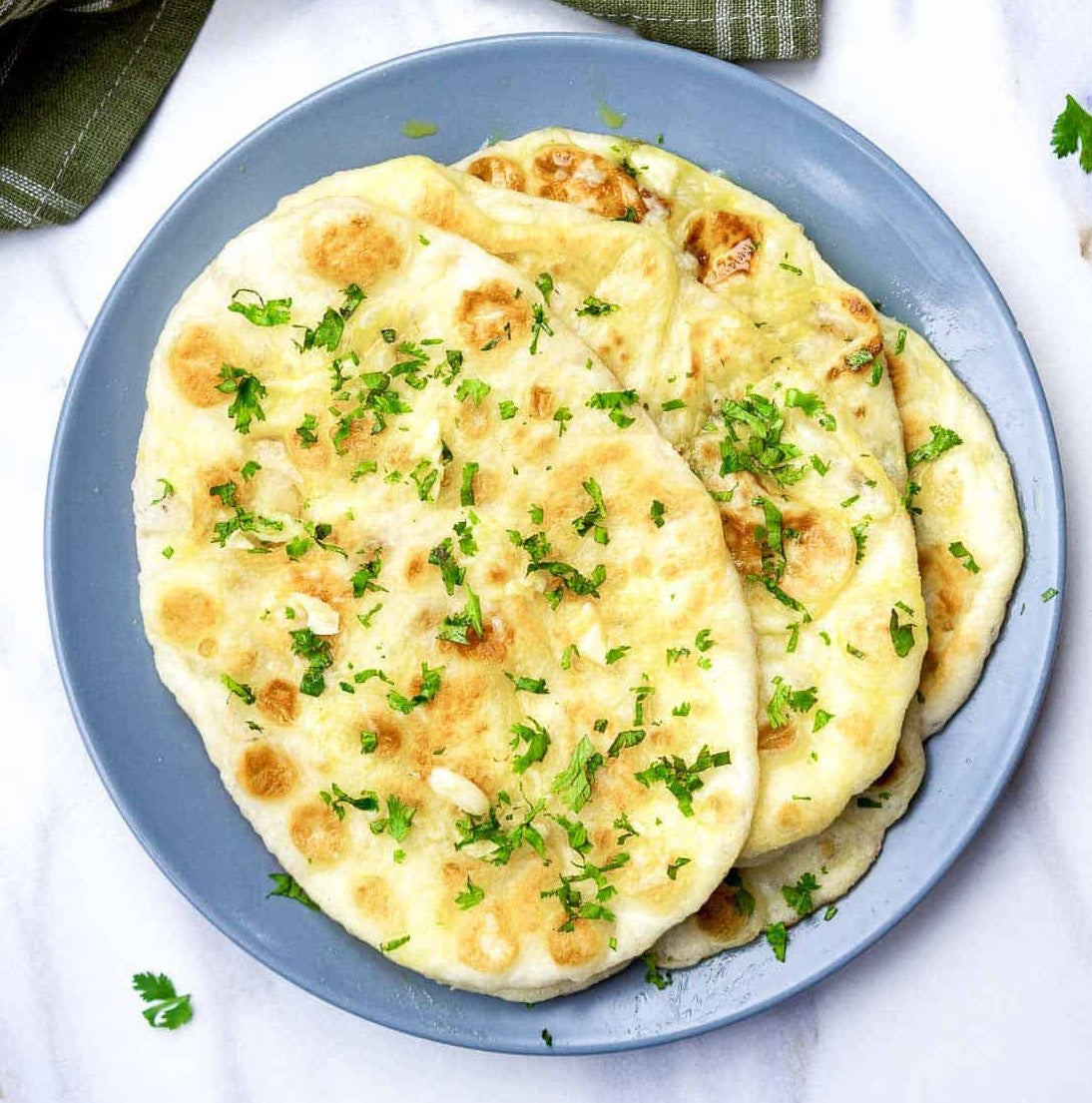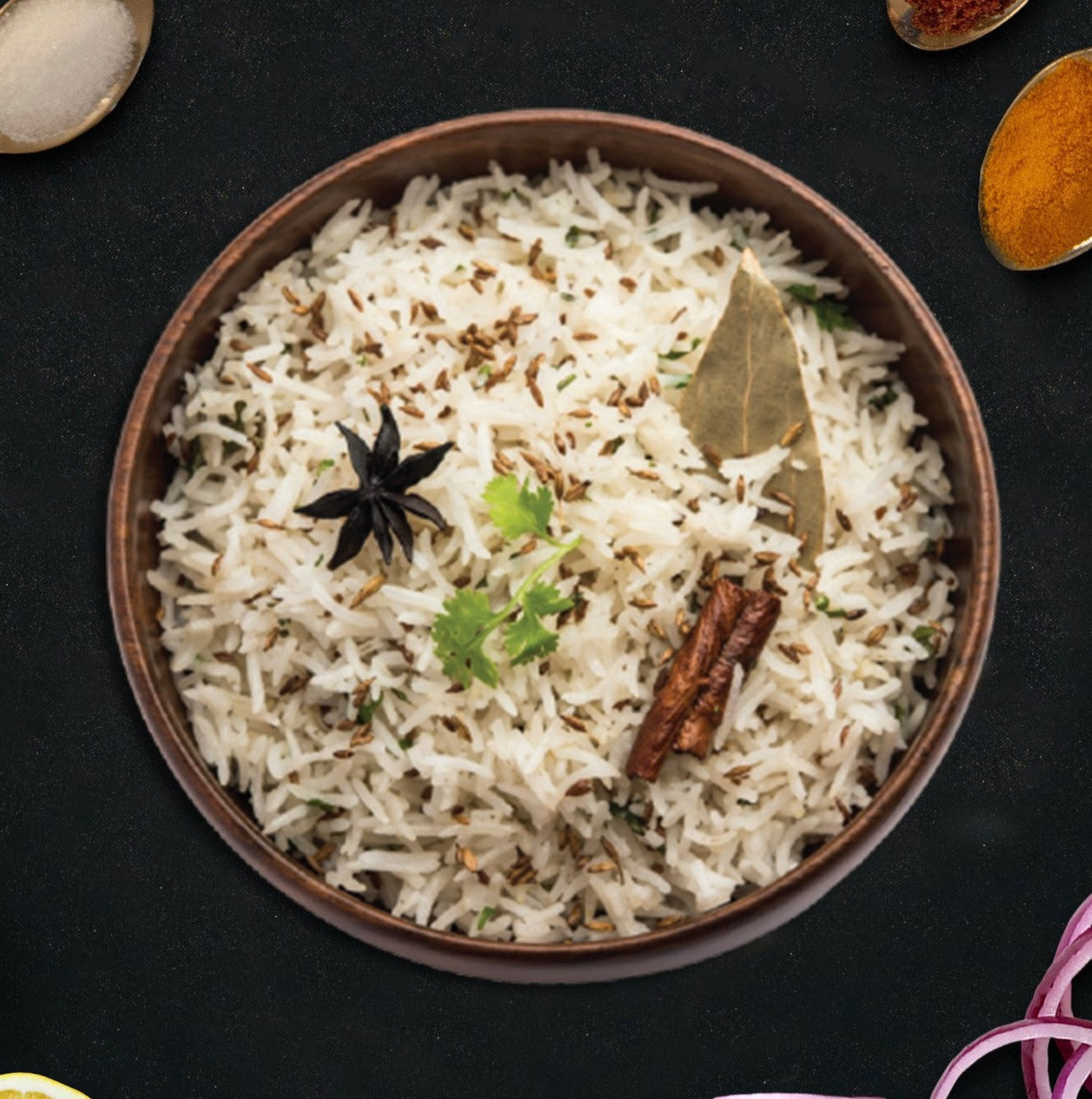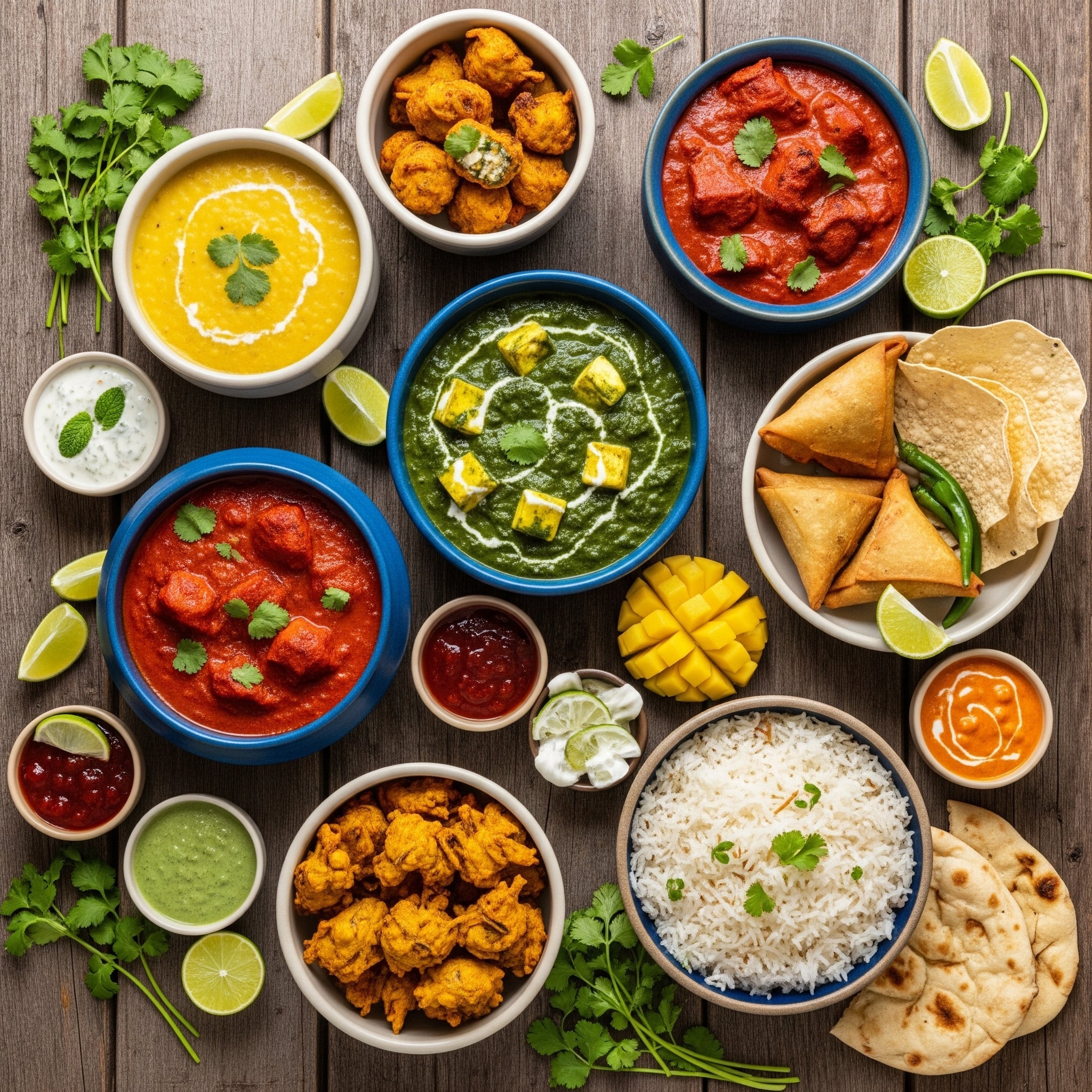
Your Guide to Indian Cuisine Catering in Australia
Indian food is one of the most vibrant, flavourful, and surprisingly versatile options you can choose for event catering, whether it’s for a corporate function or a wedding. It shines when it comes to handling different dietary needs, with so many incredible vegetarian, vegan, and gluten-free dishes that are just naturally part of the cuisine. It means every single guest gets a fantastic meal, which is why it’s becoming such a go-to choice across Australia.
Why Indian Catering Is a Brilliant Choice for Any Australian Event
Let's be honest, the food can make or break an event. It sets the tone, and nothing creates a more welcoming, exciting atmosphere than a table laden with authentic Indian dishes. Picture it: a corporate lunch in Melbourne, a wedding reception in Sydney, or even just a casual get-together in Brisbane. The depth of flavour in Indian cooking appeals to almost everyone. The rich aromas and stunning colours of classics like Butter Chicken, Palak Paneer, and fragrant Biryanis just scream celebration and warmth.
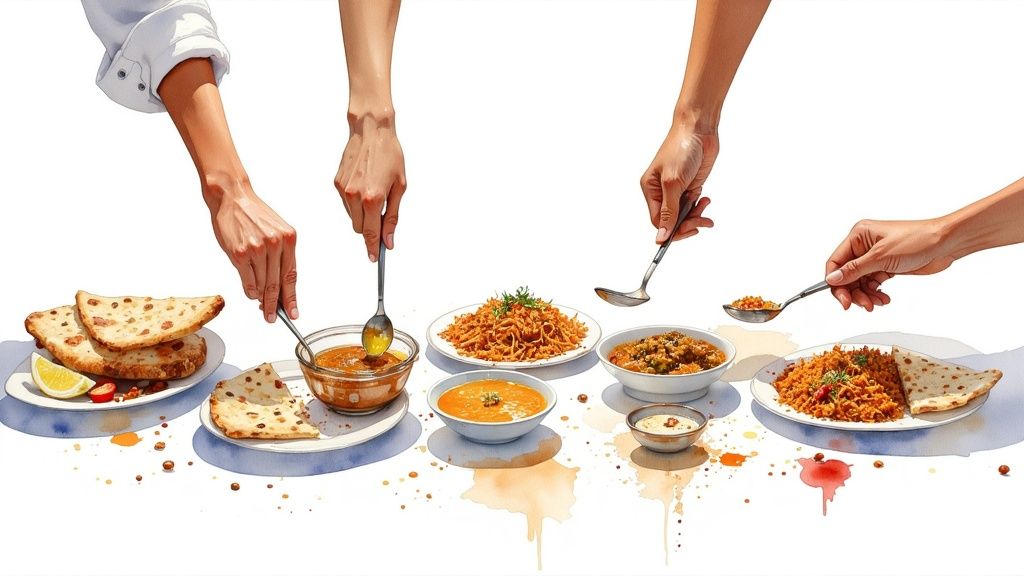
A Menu That Truly Welcomes Everyone
One of the best things about Indian food is how easily it caters for different dietary needs without feeling like a compromise. With some cuisines, the vegetarian or gluten-free options can seem like a sad afterthought. Not here. In Indian cooking, plant-based and grain-free dishes have been central to the culture for centuries.
- Vegetarian & Vegan Friendly: Think delicious lentil dals, hearty chickpea curries (Chana Masala), and flavour-packed vegetable dishes like Aloo Gobi. These aren't special requests; they're staples.
- Naturally Gluten-Free: So many of the curries, grilled meats, and rice dishes are already gluten-free, which makes putting together an inclusive menu incredibly straightforward.
As an event planner, this is a massive win. Instead of juggling a complicated spreadsheet of dietary restrictions, you can design a balanced menu that naturally works for most people. It ensures all your guests feel looked after and, most importantly, leave well-fed and happy.
Tapping into Modern Australian Tastes
Australia’s food scene is more adventurous than ever. Guests now expect exciting, global flavours at events, and the demand for authentic food experiences is only growing. Indian cuisine fits this brief perfectly.
This isn't just a feeling; it's backed by the numbers. The Australian catering services industry is a huge market, valued at around USD 3.09 billion, and it's set to keep growing. You can explore more about the catering market in Australia to see just how strong this trend is.
By choosing professional Indian cuisine catering, you’re doing more than just serving a meal. You’re giving your guests a culturally rich experience that they’ll be talking about long after the event is over.
Designing a Balanced Indian Catering Menu
Crafting the perfect menu is where the magic really happens. It’s more than just picking dishes; it’s about creating a culinary story for your event that balances comforting classics with a few exciting discoveries, making sure every single guest leaves happy. A great Indian catering menu isn't just a list—it's a journey of flavour, texture, and aroma designed to please every palate at the table.
Your goal is to put together a spread that feels both familiar and a little bit intriguing. Picture a corporate lunch in Sydney: you'll likely have adventurous foodies sitting next to colleagues with more traditional tastes. You need to nail that balance.
Building Your Foundation with Beloved Classics
Every memorable Indian feast starts with the hits—the dishes people know, love, and get excited about. These are the anchors of your menu, the comforting flavours that make everyone feel instantly welcome. I’m talking about the rich, creamy goodness of a perfect Butter Chicken or the deep, satisfying warmth of a hearty Lamb Rogan Josh.
These classics are popular for a good reason. They're reliable, delicious, and form the backbone of your spread. Including a couple of these crowd-pleasers ensures even guests who aren't too familiar with Indian food have something they'll recognise and enjoy right away.
Catering for Every Dietary Need with Flavour
Here’s where Indian cuisine truly shines: its natural ability to cater to all sorts of dietary needs without ever compromising on flavour. This isn't about setting aside a few bland "special" plates. It's about showcasing incredible dishes that just happen to be vegetarian, vegan, or gluten-free.
A vibrant Chana Masala (chickpea curry) or a soulful Dal Makhani (black lentil curry), for example, aren't just "vegetarian options." They are stars of the show in their own right, packed with protein and complex spices that everyone will want to try.
To build an inclusive menu, keep these points in mind:
- Vegetarian & Vegan Stars: Think beyond paneer (though a good Palak Paneer is always a hit!). Dishes like Aloo Gobi (potato and cauliflower) and Baingan Bharta (smoky eggplant mash) are fantastic vegan choices. Just double-check with your caterer that no ghee or cream is used to keep them purely plant-based.
- Gluten-Free by Nature: Most Indian curries, tandoori meats, and rice dishes like Biryani are naturally gluten-free. The main thing to watch out for is the bread. While Naan has gluten, you can easily offer rice or find gluten-free flatbreads as an alternative.
Pro Tip: I always recommend aiming for at least one-third of your main dishes to be vegetarian or vegan. From experience, this ratio comfortably covers all your bases and adds wonderful variety to the table that all your guests will appreciate.
This thoughtful approach taps right into what people want today. Australia's ethnic food market is booming, valued at around USD 1,325.77 million and set to grow even more. People are seeking out authentic food experiences that cater to our diverse, modern lifestyles.
Exploring Regional Specialties for a Unique Touch
Once you’ve got your classics and dietary-friendly dishes locked in, it’s time to have some fun and add a little adventure. India is a massive country with dozens of distinct regional cuisines, each with unique flavour profiles that can make your event truly stand out. This is your chance to introduce your guests to something new.
Instead of sticking only to the well-trodden path of North Indian cooking, why not include a specialty from another region?
- From the South: You could try a tangy, coconut-based curry from Kerala.
- From the West: Maybe a vibrant, aromatic dish from Goa, famous for its unique spice blends.
- From the East: Or what about a delicate, subtly spiced fish curry from Bengal?
Adding a regional specialty shows real thought and care. It’s a fantastic conversation starter and a simple way to elevate your indian cuisine catering from just another meal into a genuine culinary experience.
If you want to get a feel for the sheer variety out there, it's worth browsing a wide collection of authentic Indian curries to see how different ingredients and regions create such delicious, distinct results.
A Sample Menu Structure for Balance
To help you pull all these ideas together, here’s a sample planner. This kind of structure is a great way to make sure you have a good mix of flavours, proteins, and options for everyone.
Sample Indian Catering Menu Planner
This table is a great starting point for planning a menu that balances crowd-pleasing flavours while ensuring everyone, regardless of dietary needs, has wonderful options to choose from.
| Course | Classic (Meat) | Vegetarian/Vegan Option | Gluten-Free Choice | Regional Specialty |
|---|---|---|---|---|
| Appetisers | Chicken Tikka Skewers | Vegetable Samosas | Onion Bhajis (chickpea flour) | Vada Pav Sliders (Mumbai) |
| Mains | Butter Chicken | Palak Paneer (Vegetarian) | Lamb Rogan Josh (ensure GF) | Goan Fish Curry (Goa) |
| Mains 2 | N/A | Chana Masala (Vegan) | Dal Makhani (Vegetarian/GF) | N/A |
| Sides | Saffron Rice | Aloo Gobi (Vegan/GF) | Cucumber Raita | Kachumber Salad |
| Breads | Garlic Naan | N/A | N/A | N/A |
With a menu like this, you create a dynamic and satisfying feast. You have the creamy, mild Butter Chicken for comfort, the spicy kick of Rogan Josh, the earthy goodness of Palak Paneer, and the tangy surprise of a Goan curry. Every guest can build a plate that’s perfect for them, which is the ultimate recipe for a successful event.
Getting the Food Quantities Right Without the Guesswork
One of the biggest worries when planning any event is getting the food right. Order too little, and you've got hungry guests. Order too much, and you're left with a mountain of wasted food and a blown budget. Thankfully, when it comes to Indian cuisine catering, there are some solid industry guidelines that take the guesswork out of it.
The secret is to think about the type of event you're hosting. A quick, two-hour cocktail party has a completely different vibe—and appetite—compared to a four-hour sit-down wedding reception. The goal isn't just to have enough food, but the right mix of starters, mains, and sides for the occasion.
A Practical Guide to Portion Sizes
Let's start with some general rules of thumb. These are my go-to estimates for a standard meal where guests will be sitting down to a full plate.
-
Appetisers: For a pre-dinner cocktail hour, I always recommend 4-6 pieces per person. If the appetisers are the main event, like for a stand-up reception, you’ll want to bump that up significantly to 10-12 pieces per person, per hour. You can't go wrong with classics like samosas, pakoras, or chicken tikka skewers.
-
Main Curries: A good benchmark is about 250-300 grams of total curry per person. This is the combined weight, so if you're offering three different curries, that's roughly 100 grams of each per guest.
-
Rice & Biryani: Rice is the essential accompaniment that makes the meal complete. You should plan for about 150 grams (cooked weight) of plain or saffron rice per person. If you're serving a rich, all-in-one dish like a Chicken Biryani, you can factor in a larger portion of around 250 grams per person, since it really acts as both a main and a side.
This infographic is a great visual for mapping out your menu, from picking the crowd-pleasers to adding some regional flair.

It really shows how balancing familiar dishes with unique options and catering to different dietary needs is the key to a menu everyone will remember.
Real-World Scenarios in Sydney and Melbourne
Let’s put these numbers into practice with a couple of common events you might be planning right now.
Scenario 1: The Corporate Lunch in Sydney (50 Guests)
This is usually a shorter affair, about an hour to an hour and a half, where people want a satisfying plate without too much fuss.
- Appetisers: Not essential, but a couple of pieces per person (100 total) is a nice touch to get things started.
- Curries: Keep it simple with three popular choices—say, one chicken, one lamb, and one vegetarian. For 50 people, that’s about 15 kg of total curry, so 5 kg of each.
- Rice: You'll need around 7.5 kg of cooked Basmati rice.
- Naan Bread: Plan for one full naan per person, so 50 naans. I always throw in a few extra, just in case.
A common mistake I see is people ordering too many different dishes for a smaller group. Sticking to 3-4 excellent mains is so much better than offering ten average ones. It keeps the quality high, simplifies things, and is much kinder to your budget.
Scenario 2: The Wedding Reception in Melbourne (150 Guests)
Now this is a bigger, longer celebration. People will eat more, relax, and likely come back for seconds over the course of the evening. It's always smart to increase your estimates slightly.
- Appetisers: For the cocktail hour, you'll want 5-6 pieces per person, which comes to around 800-900 pieces in total.
- Curries: Here, you can expand to four or five options to give guests more variety. For 150 guests, you’re looking at roughly 45 kg of total curry. A great mix would be 15 kg of a popular chicken dish, 10 kg of lamb, 10 kg of a paneer curry, and 10 kg of a vegan dal.
- Rice/Biryani: You'll need a solid 22-25 kg of rice to make sure no one misses out.
- Naan Bread: I'd budget for 1.5 naans per person, which means ordering about 225 naans.
With these frameworks, you can walk into a conversation with your caterer feeling confident you’re building an order that perfectly fits your event, ensuring everyone leaves happy and well-fed.
Understanding Your Catering Budget and Pricing
Trying to figure out the cost of Indian cuisine catering can feel a bit like guesswork, but it doesn't have to be. The secret to planning a fantastic feast without any nasty budget blowouts is knowing what actually goes into the final price. From the spices in the curries to the service on the day, several moving parts come together to shape your overall spend.
Most caterers you'll talk to will quote you a per-head rate. This is great because it makes budgeting straightforward – you get a clear cost for each guest, which usually covers all the food. But that rate isn't set in stone; it can shift quite a bit depending on what you want to serve.
For example, a menu starring a luxurious Goan Prawn Curry will naturally cost more per person than one built around comforting, crowd-pleasing favourites like Dal Makhani or a classic Chicken Korma. This is where a bit of smart menu planning becomes your best friend.
Breaking Down the Key Cost Factors
To get a clear picture of where your money is going, it helps to understand what makes up a catering quote. It’s not just about the food, especially when you're organising an event in a major hub like Sydney or Melbourne.
- Menu Complexity and Ingredients: This is the big one. As we touched on, a rich Lamb Rogan Josh uses more expensive ingredients and takes longer to prepare than a simple, delicious Aloo Gobi, and the price will reflect that.
- Service Level Required: Are you happy with a simple "drop-off" where the food arrives hot and ready to go? Or do you need a full team on-site to handle setup, serving, and the clean-up afterwards? Full-service options add labour costs, but they can make your event completely stress-free.
- Guest Count: While you’re paying per head, larger events can sometimes bring the price down a little. Caterers can buy ingredients in bulk, so you might find the per-person rate for a 150-guest wedding is a touch lower than for a 30-person corporate lunch.
- Delivery and Location: The distance from the kitchen to your venue in Brisbane, Sydney, or Melbourne will factor into the delivery fee. A central, easy-to-access spot will almost always be cheaper than a venue that's off the beaten track.
It’s clear that Aussies are happy to invest in quality food experiences. Recent data shows a huge shift in household spending, with the portion of food budgets going to dining out and catering more than doubling from 13.7% to 30.3% between 2021 and 2023. You can dig into the numbers in this analysis of Australia's growing foodservice market to see the full picture.
Smart Strategies for Maximising Your Budget
Getting the most out of your budget doesn't mean you have to skimp on flavour or quality. With a few clever choices, you can put on an impressive and generous spread that still fits your numbers. It's all about finding that perfect balance.
A fantastic way to manage costs is to balance your menu. Instead of offering three premium meat dishes, choose one standout lamb or seafood curry and complement it with two exceptional chicken and vegetarian options. Your guests still get variety and luxury, but your budget remains much more manageable.
Think of it as creating a "high-low" mix. The rich, buttery goodness of a crowd-pleasing Butter Chicken or a vibrant Chana Masala sits beautifully alongside a more luxurious specialty dish. This approach makes your menu feel abundant and thoughtfully planned, without every single item being from the top price bracket.
Realistic Cost Expectations in Major Australian Cities
So, what should you really expect to pay? Prices will always vary, but here's a general guide to per-person costs for a standard drop-off Indian cuisine catering order (food only) in Sydney or Melbourne.
| Event Type | Estimated Per-Person Cost (AUD) | Menu Focus |
|---|---|---|
| Casual Corporate Lunch | $25 - $40 | A balanced mix of 2-3 curries, rice, and naan. |
| Significant Celebration (e.g., Birthday) | $40 - $60 | Includes appetisers, 3-4 main course options, and sides. |
| Wedding Reception / Formal Event | $60 - $90+ | An extensive menu with multiple appetisers, a wide range of mains (including premium options), sides, and sometimes dessert. |
Of course, these are just starting points. If you're looking for a more streamlined option, exploring pre-designed solutions like the Catering Packs from Jewel of Asia is a great move. They've been curated for different group sizes and offer a perfectly balanced menu at a set price, which takes all the guesswork out of ordering for your Sydney, Melbourne, or Brisbane event. It gives you the clarity to plan with confidence and just focus on enjoying the day.
Getting it Right on the Day: From Delivery to Serving
The real magic of event catering isn't just in the menu you choose; it's in the execution. A flawless on-the-day experience is what turns a well-planned menu into a feast everyone remembers. Managing the flow, from the moment your Indian cuisine catering arrives to the final presentation, is absolutely key to serving every dish at its peak.
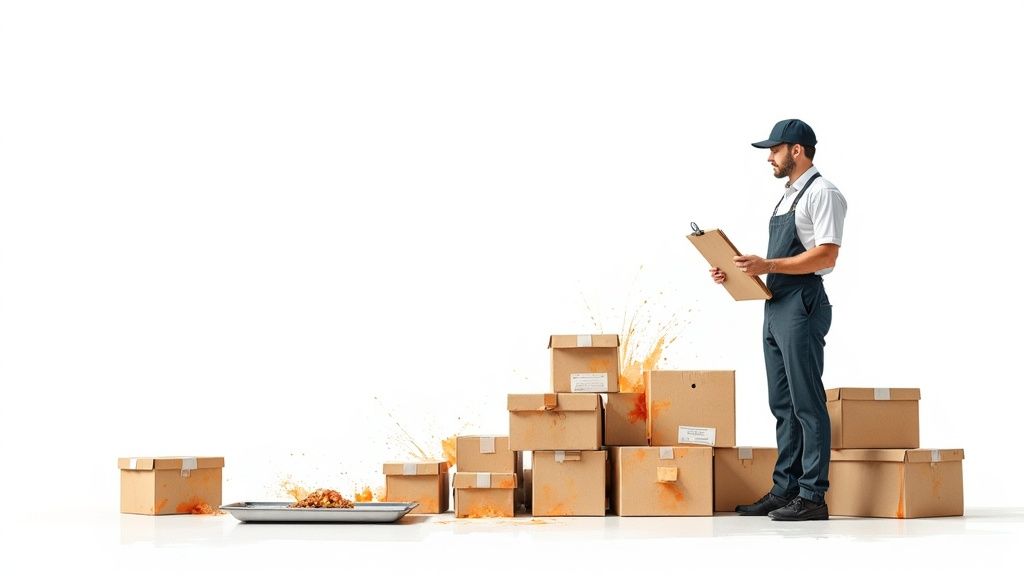
This all starts with having a good chat with your caterer well before the event. You need to be completely clear on their delivery process, what gear they’re bringing, and what you need to have sorted at your end. Getting this locked in early saves you from any last-minute panic and sets the stage for a smooth, stress-free setup.
Coordinating a Seamless Delivery
A well-managed delivery is the first domino to fall on event day. My best advice? Don't assume anything. Have a proper conversation with your caterer to get everything straight. That clarity is your ticket to a hassle-free experience.
Here are the non-negotiable questions to ask:
- What’s the exact delivery window? You need a specific timeframe, like "between 2:00 and 2:30 PM," so you can be there and ready.
- How will the food be packaged? Will it arrive piping hot in insulated containers, or chilled and ready for reheating? This detail shapes your entire serving plan.
- What serving equipment is included? Find out if they provide bain-maries (chafing dishes), serving spoons, and tongs. If not, you’ll have to organise these yourself.
- Do you need anything specific on-site? The caterer might require easy access to a kitchen, power points for warming gear, or a dedicated area to set everything up.
Knowing this information upfront means you can prep your venue and have everything in place for a quick, organised setup the moment the food arrives. For anyone in major cities, understanding the ins and outs of how Indian food delivery in Melbourne works, for instance, can give you a head start on what to expect.
Reheating and Presenting Indian Dishes Perfectly
Indian food is wonderfully robust, but serving it at the right temperature is non-negotiable if you want the flavours and textures to shine. If your catering is delivered chilled—which is common for freshness and food safety—you’ll need a solid reheating strategy.
For Curries and Dals:
The best way is to warm them gently on a stovetop over low-to-medium heat, stirring now and then so nothing sticks. If you're using an oven, pop the curry in an oven-safe dish, cover it with foil, and heat it at around 160°C until it's hot all the way through. This slow-and-steady method keeps the meat and veggies from turning to mush.
For Rice and Biryanis:
Dry rice is a meal-killer. To bring it back, just add a tiny splash of water, cover the container, and either microwave it in short bursts or heat it in a covered pot on the stove. That little bit of steam does wonders for its fluffy texture.
For Breads like Naan:
To revive naan, lightly spritz it with water and pop it in a hot oven for a minute or two. This makes it soft and pliable again, perfect for scooping up all that delicious curry.
A Note on Presentation: Don't just plonk the food out in the delivery containers. Take a moment to garnish your curries with a sprinkle of fresh coriander, swirl a bit of cream into your Dal Makhani, or top a Biryani with crispy fried onions. These small touches make a massive difference and elevate the whole look of your buffet.
Catering Day Timeline and Checklist
On a hectic event day, a checklist is your best mate. It keeps you on track and makes sure nothing gets missed in the rush. Here’s a simple timeline to help you manage everything from prep to pack-down.
| Timeframe | Task | Pro Tip |
|---|---|---|
| 24 Hours Before | Confirm delivery time and final numbers with the caterer. | A quick text or email is all it takes. This double-checks you’re on their radar and avoids any mix-ups. |
| 3-4 Hours Before | Prepare the serving area. Set up tables, tablecloths, and any power cords for warming trays. | Create clear stations for appetisers, mains, and sides. This helps with guest flow and prevents a bottleneck. |
| 1 Hour Before | Unpack non-food items. Lay out plates, cutlery, napkins, and serving utensils. | If you're using bain-maries, now’s the time to fill the water pans and light the fuel burners. |
| Delivery Time | Meet the delivery driver and check the order to make sure everything has arrived correctly. | Do a quick count against your order sheet. It’s far easier to sort out a missing item right away. |
| 30-45 Mins Before Serving | Start reheating food if it arrived chilled. Transfer dishes into serving platters or bain-maries. | Begin with dishes that hold their heat well, like dals and rich meat curries. Reheat breads and rice last. |
| During the Event | Monitor the buffet. Keep an eye on food levels and top up dishes as needed. | Combine half-empty containers to keep the buffet looking abundant and appealing all evening. |
| Post-Event | Safely pack up any leftovers and start the clean-up as per your venue or caterer's instructions. | Have takeaway containers ready for guests or for yourself. Don't let that delicious food go to waste! |
With a structured plan like this, you can confidently take charge of your Indian cuisine catering logistics. It ensures the food isn't just delicious but is served beautifully and efficiently, leaving you free to actually enjoy the event with your happy, well-fed guests.
Got Questions About Catering Indian Food? We've Got Answers
Even with the best plan, a few questions always seem to pop up when you're finalising the details. Getting them sorted is the final step to feeling completely confident that your event in Sydney, Melbourne, or Brisbane will be a delicious success. Let's walk through some of the most common queries we get from clients.
How Far in Advance Should I Book Indian Catering?
Timing is crucial, especially when you're planning an event during the busy spring racing season or the end-of-year holiday rush. Honestly, how far ahead you need to book really comes down to the size of your party.
For a big wedding or a major corporate bash with over 100 guests, you'll want to lock in your caterer three to six months in advance. This isn't just about securing your date; it gives you ample time to work closely with the catering team, tasting dishes and creating a menu that’s perfect for your vision.
On the other hand, if you're hosting a more relaxed gathering for under 50 people, a lead time of two to four weeks is usually plenty. Just a little tip from experience: if your event is on a weekend, it never hurts to book a bit earlier to be safe.
Can I Ask for Different Spice Levels?
Of course! That's one of the beautiful things about Indian cooking – it's incredibly flexible. Any good caterer will be more than happy to adjust the heat levels to make sure all your guests have a great time. The trick is just to be clear about what you want.
A strategy I've seen work brilliantly is to offer a mix across your main dishes. For example, you could request a crowd-favourite like Butter Chicken to be made ‘mild’, which is perfect for guests who are less adventurous or for any kids at the party. Then, keep most of your other curries at a standard ‘medium’ heat. For those who love a bit of a kick, you can designate one dish, like a classic Vindaloo or a fiery vegetarian curry, to be authentically ‘hot’.
By offering a range of spice levels, you're not just serving food; you're giving your guests the power to create their own perfect plate. It’s a thoughtful detail that ensures everyone, from the chilli-shy to the heat-lover, will be happy.
What Are Some Good Gluten-Free or Vegan Indian Dishes?
This is where Indian food really shines. So many incredible dishes are naturally gluten-free and vegan, meaning you can offer amazing choices that feel like a core part of the menu, not an afterthought.
- Top Gluten-Free Choices: You're safe with nearly all rice dishes, lentil dals, and chickpea curries like Chana Masala. Most tandoori-cooked meats and paneer dishes are also fantastic gluten-free picks since they don't use any flour in the marinades.
- Excellent Vegan Options: Think of classics like Aloo Gobi (a wonderful potato and cauliflower dish), Baingan Bharta (that smoky, delicious aubergine mash), and most lentil dals. The only thing you need to do is double-check with your caterer that they haven't used ghee (clarified butter) or cream.
What's the Best Way to Handle Leftovers?
Don't let any of that deliciousness go to waste! Indian food makes for some of the best leftovers, as the spices get a chance to meld and deepen overnight. For safety, just make sure any hot food cools down to room temperature (this should happen within two hours of serving) before you pop it in the fridge.
The best approach is to store your curries, dals, and rice in separate airtight containers. They’ll stay fresh and tasty in the fridge for up to three or four days. It's the perfect way to enjoy a hassle-free, incredible meal the day after your event.
Planning your next get-together? Let Jewel of Asia handle the food with our authentic, chef-prepared Catering Packs. We deliver preservative-free Indian meals right to your door in Sydney, Melbourne, and Brisbane. Check out our delicious options today.
Share
